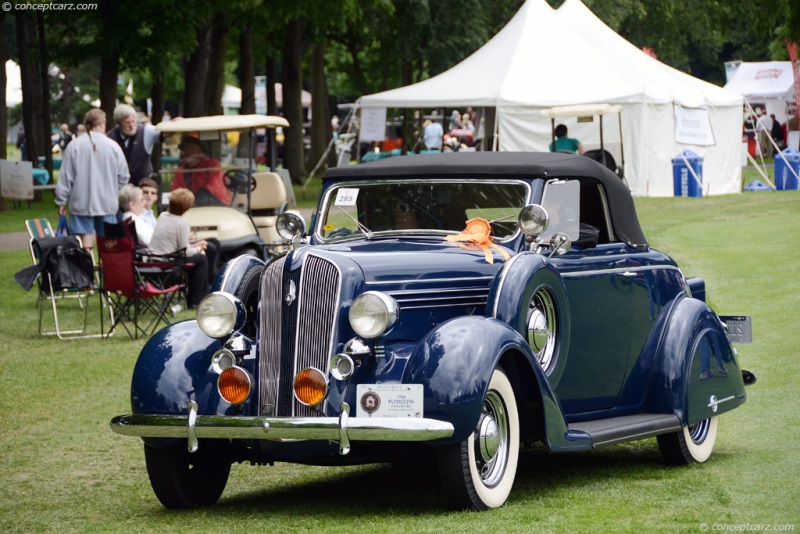The Chrysler Corporation introduced the Plymouth Company in 1928 as an entry-level, low-priced automobile to complement its Chrysler, DeSoto, and Dodge vehicles. The origins, however, date back even further, as Walter P. Chrysler had taken over control of the ill-fated Maxwell-Chalmers car company in the early 1920s, receiving the Maxwell as part of the package. Beginning in 1924, the company's facilities were used to build the six-cylinder Chrysler. In 1926, the Maxwell was rebadged as a four-cylinder Chrysler 52 model, and in 1928, it became the Chrysler-Plymouth Model Q. The following year, the 'Chrysler' portion was dropped with the introduction of the Model U.
Convertible Coupe
View info and historyInitially, Plymouth vehicles were sold exclusively through Chrysler dealerships and were priced slightly higher than Ford and Chevrolet vehicles, but offered standard features such as internal expanding hydraulic brakes that were not typical within the entry-level market segment. The company's logo was the rear view of the ship Mayflower that landed at Plymouth Rock in Plymouth, Massachusetts. Although the ship was its logo, its name, selected by Joe Frazer, was in reference to the binder twine produced by the Plymouth Cordage Company and popular among farmers. By 1930, Plymouth vehicles were sold by all three of Chrysler's divisions, including Chrysler, DeSoto, and Dodge.During the Great Depression of the 1930s, the Plymouth automobiles provided significant financial stability for the Chrysler Corporation, and by 1931 ranked third in industry sales. The Model PA of 1931 introduced floating power that was advertised as 'The smoothness of an eight – the economy of a four.' The new Plymouth PC 'Plymouth Six' of 1933 came equipped with a 190 cubic-inch version of Chrysler's flathead-six engine equipped with a downdraft carburetor. Its wheelbase measured 107-inches, down from 112-inches, much to the dismay of customers. Poor sales prompted the company to adapt the 112-inch Model PB chassis with the PC body and DP front fenders, hood, and radiator shell. In this guise, the model designation became the PD. The design of the PC was brought in-line with the PB and became the 'Standard Six.' 
Phaeton by Richards
Chassis #: P6112275
View info and history
Auction entries : 11936 was the final year for the fender-mounted spare tire carriers within the passenger line. The Plymouth lineup included the P1 resting on a 113-inch wheelbase and built in two- and four-door configurations with prices that ranged from the low-$500s to the mid-$600s. The Model P2 had a 113-inch wheelbase and also included two- and four-passenger body style configurations with prices that ranged from the high-$500s to $900. The seven-passenger body styles rested on a 128-inch wheelbase. Both the P1 and P2 came equipped with a 201.3 cubic-inch engine with a cast-iron block, four main bearings, solid valve lifters, and delivered 82 horsepower at 3,600 RPM. Cars destined for the export market received a 170.4 cubic-inch engine. The transmission was a three-speed sliding gear unit with floor shift controls, a single dry disc clutch, and hydraulic brakes on all wheels. Besides the larger footprint, exterior distinguishable features of the two 1936 models were the lack of the three chrome chevrons on the P1's headlamp stanchions and a painted rather than chrome-plated windshield frame. Both the P1 and P2 had a business coupe, two- and four-door sedan, and two- and four-door touring sedan (both trunkless and humpback styles). The P1 had a commercial sedan while the P2 added a seven-passenger sedan, eight-passenger Westchester, rumble seat coupe, and a convertible coupe. Within the Deluxe P2 model range, the four-door touring sedan was the most popular, accounting for 240,136 sales. Next popular was the two-door touring sedan with 99,373 sales, followed by 54,601 of the business coupe, 10,001 of the sedan, 9,663 of the rumble seat coupe, and 6,149 of the two-door sedan. 
Phaeton by Richards
Chassis #: P6112275
View info and history
Auction entries : 1For the first time with Plymouth models, the Coupes had the spare tire mounted behind the passenger's seat. To accommodate this change, the gas tank filler was relocated from the body to the left rear fender. The interiors of all body styles received new placements for the instrumentation, with a large dial located in the center of the instrument panel. A special trim package was offered on the P2 that added additional chrome to the interior and over-stuffed seats and additional throw pillows. The previous chrome-plated bullet-shaped headlamps were replaced by free-standing painted lamps in the fender catwalks. In the front was a narrow radiator shell with a three-piece grille insert, with the center insert painted to match the body. Chrysler products received safety features in 1937 that included recessed controls, padded seat-backs of the front seats, and flat dashboards. 
Phaeton by Richards
Chassis #: P6112275
View info and history
Auction entries : 1During Plymouth's lifespan, lasting from 1928 through 2001, it was consistently ranked among the top-selling automobile brands in the United States. It nearly surpassed Ford in 1940 and 1940 as the second-most popular make of automobiles in America.
by Daniel Vaughan | Jan 2021
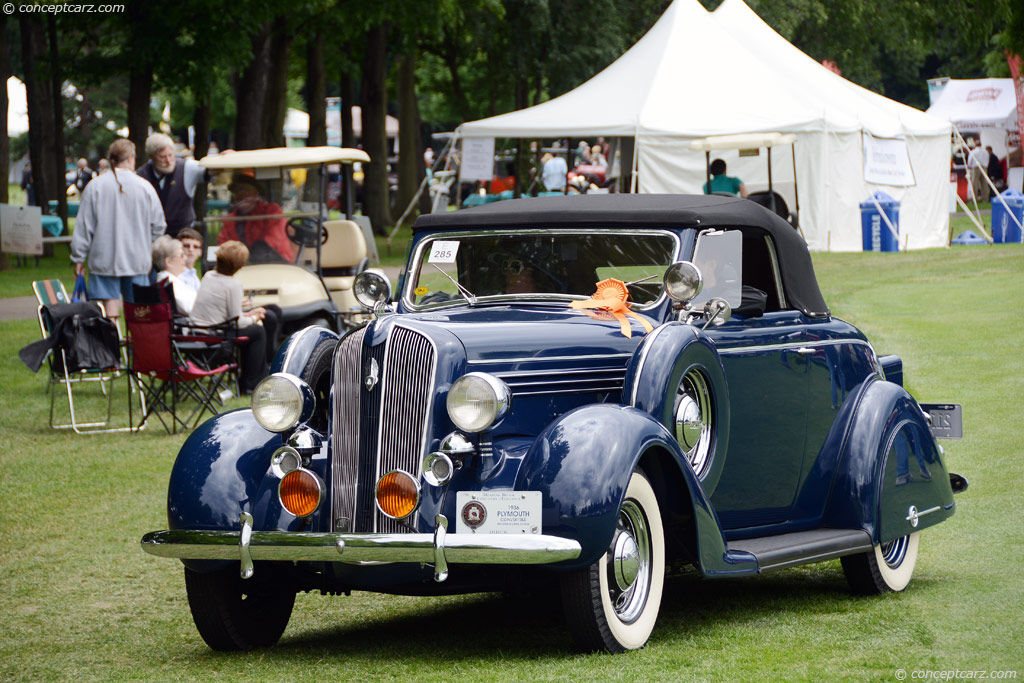
Convertible Coupe
View info and history
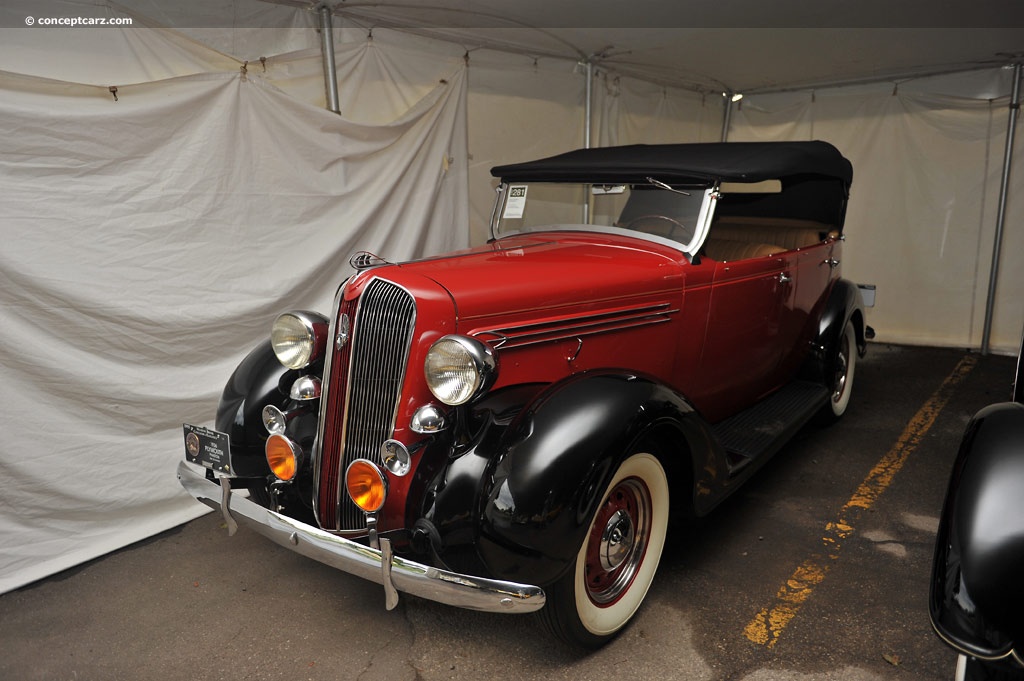
Phaeton by Richards
Chassis #: P6112275
View info and history
Auction entries : 1
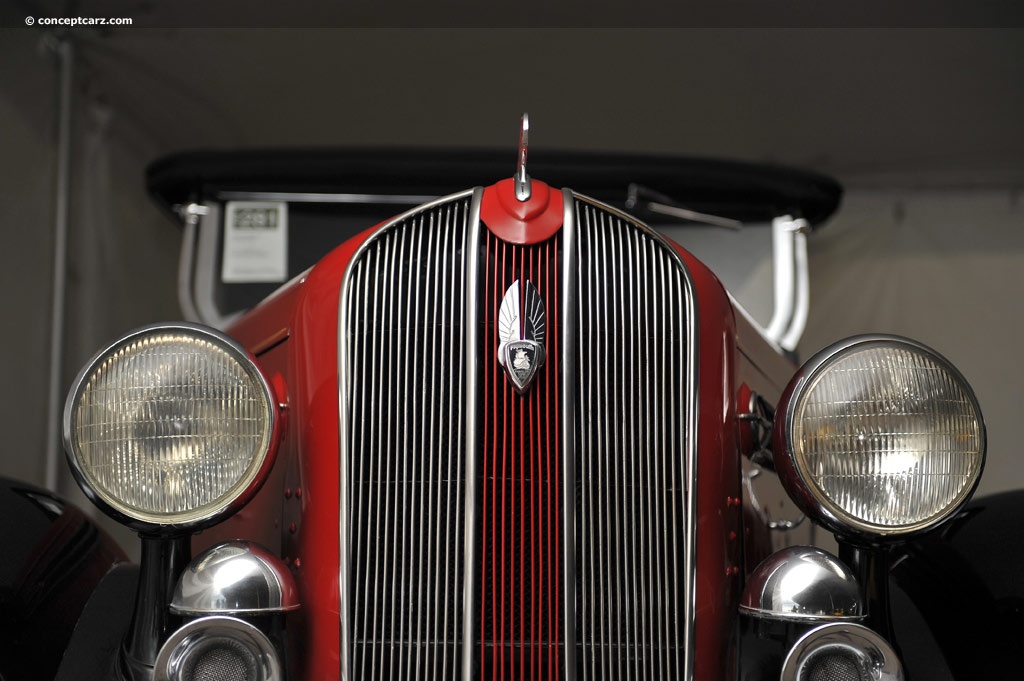
Phaeton by Richards
Chassis #: P6112275
View info and history
Auction entries : 1
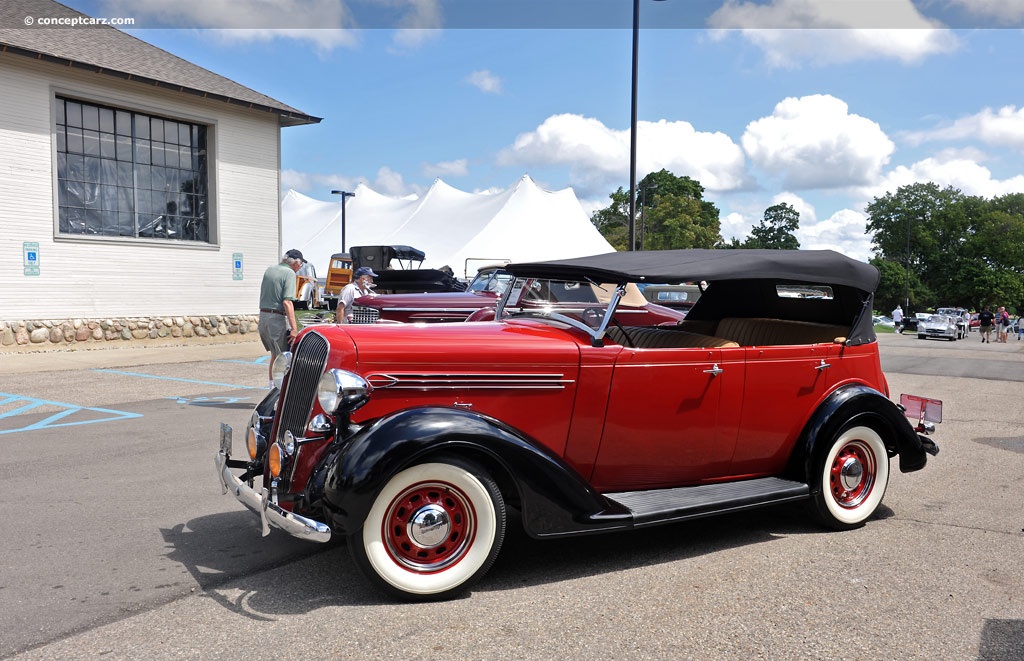
Phaeton by Richards
Chassis #: P6112275
View info and history
Auction entries : 1
by Daniel Vaughan | Jan 2021
Similarly Sized Vehicles
from 1936
Similarly Priced Vehicles
- Ford Model 68 ($505-$755)
- Graham Model 110 ($865-$1,170)
- Pontiac Master Six ($620-$760)
Average Auction Sale: $25,068
1936 Plymouth P2 Vehicle Profiles
Recent Vehicle Additions
Performance and Specification Comparison
Price Comparison
Related Automotive News

Make Lancia Great Again: London Concours Reveals Lancia Legends Display
The London Concours has announced its Lancia Legends display – a celebration of cars from the golden era of Lancia
Line-up includes icons like Henri Toivonens Lancia 037 Rally Evo 2, a one-of-59 B24 Spider and the ultimate Flaminia a Super Sport...
FCA Joins Plug And Play And MMSDC Partnership Creating Mobility Innovation Hub In Detroit
Plug and Play Detroit powered by AmplifyD will provide streamlined access to an ecosystem of hundreds of technology startups, with an emphasis on women and minorities
January 2, 2020 , Auburn Hills, Mich. - FCA today announced that it will...

RM Auctions to Present The Merrick Auto Museum Collection at 13th Annual Hershey Sale
OVER 100 BRASS ERA CARS AND SELECTION OF MEMORABILIA OFFERED ENTIRELY WITHOUT RESERVE
RM Auctions set to offer the Merrick Auto Museum Collection at Hershey auction, 10-11 October in Pennsylvania
Offered entirely without reserve, the multi...

CHRYSLER BRAND CELEBRATES 90 YEARS OF STYLE, ENGINEERING INNOVATION AND GROUNDBREAKING PRODUCTS
September 22, 2015 , Auburn Hills, Mich. - Chrysler Six, Airflow, Imperial, New Yorker, 300 and Town %26 Country are just some of the nameplates that mark the rich history of the Chrysler brand.
2015 marks the 90th anniversary of Chrysler, which...

Cherished Classics From The Pettit Collection Will Be Offered Without Reserve
The 1929 Duesenberg Blue J and 11 collector cars from the William A. C. Pettit, III Collection will be sold at Gooding %26 Companys Pebble Beach Auctions
Estate Proceeds will benefit the Shriners Hospital for Children®-Tampa
Gooding %26...













